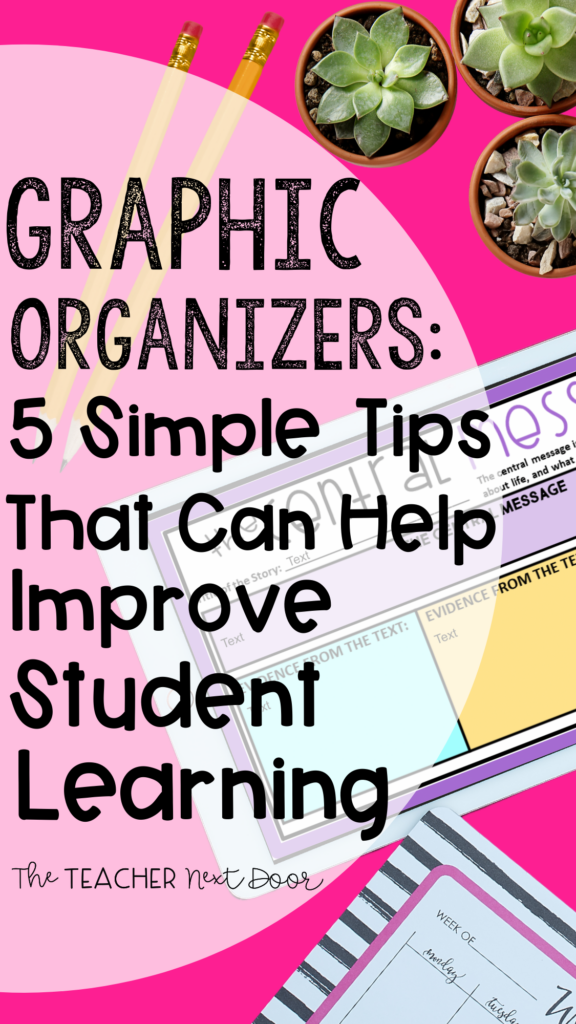
There’s a reason why graphic organizers are popular from elementary school through college!
These simple but powerful sheets of paper allow students to actively participate in the metacognitive process while building vital reading skills.
Here are 5 tips that can help improve student learning when using graphic organizers!
Tip #1: Organizing Information Does More than Secure Reading Skills
Within upper elementary, students can begin to build the foundation of how they can best read, process, and analyze new information.
With the advent of new technologies within the classroom, much of our instruction on taking proper notes has dissipated.
Graphic organizers provide students with a visual way to organize their thoughts and record important ideas from the text.
Using Graphic Organizers means that you’re focused on specific reading skills, but you’re also teaching students the invaluable skill of how to discriminate between filler information and essential information, which is actually an important reading comprehension skill (determining importance)!
Tip #2: Determine the Learning Goal with Students
It’s crucial to highlight the goal of graphic organizers with students and share with them why we use them. Plus, kids love to hear that a certain tool will make their lives easier!
Determining each graphic organizer’s purpose and goal helps students understand that each graphic organizer serves a different purpose.
Some graphic organizers require students to find the main idea and details of a piece of text, while another may require students to record questions they have while reading.
There’s a myriad of graphic organizers, and reviewing and reinforcing the skill that each is looking for is vital to student success.
Tip #3: Use Them to Assess Student Learning
Reading assessments don’t always need to be lengthy and tedious. Likewise, there’s not always a need for students to provide a written response to measure their proficiency with a skill.
To be frank, it’s not always developmentally appropriate to drill students with extended response after extended response.
Are extended response questions important within upper elementary? Absolutely.
Do they need to be administered for every reading skill? No way.
Consider providing a reading passage to students and a graphic organizer focused on the skill you’re working on that week and using this method as a form of assessment.
Using a graphic organizer benefits both you and your students! You’ll have less to grade, and students will have a low-threshold, high-ceiling assessment where they can display where they’re at with this particular skill.
Tip #4: Teach How Students Can Move Information from the Graphic Organizer to an Extended Response Answer
When you’re ready to review how to complete extended response activities with students, use graphic organizers as a natural scaffold for moving important information from one place to another.
Here’s how to do this:
- Read the passage and annotate as you go
- Complete a graphic organizer that pairs directly with the extended response question you’ll be asking students to answer
- Read the extended response question together
- Answer the extended response question pulling exact information from the graphic organizer into a well-written paragraph
Modeling writing WITH students instead of FOR students makes a huge impact.
A graphic organizer is a perfect way to do just this!
Tip #5: Model How to Write Notes, Not Sentences
I saved my favorite tip for last. In upper elementary, students are always told to “use complete sentences.”
So, the day you tell them they don’t have to (under these circumstances,) they jump for joy!
Be sure to emphasize that when a stranger reads their notes, they must understand them. This is a vital note taking skill that often gets over looked.
It’s also a very difficult skill for students. So, be patient with them as they navigate how to self-monitor.
Then, teach kids to pair and share to review their graphic organizer notes as they create them. This is a great way to emphasize responsible and respectful discourse between students! (Hello speaking and listening standards!!)
Bonus Tips: Use Graphic Organizers with Consistency
- Have a variety on hand for every reading skill, and then some!
- Consider using graphic organizers in all subject areas.
- Keep a file bin of different graphic organizers organized by skill that you can pull from while teaching strategy or guided reading groups.
Want to grab a complete set of graphic organizers for EVERY upper elementary reading skill?
I’ve got you covered!
This print and go (or digitally assign and go) resource has everything you need from the first day to the last day of school!

CHECK OUT THESE SIMILAR POSTS:
-
4 Super Simple Ways to Effectively Use Anchor Charts to Teach Reading Skills
-
What are Strategy Groups in Reading and How Best to Use Them

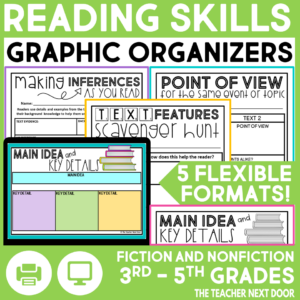
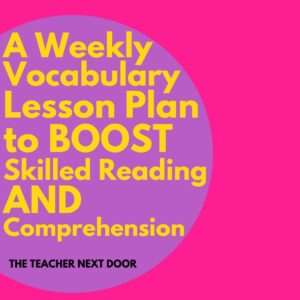
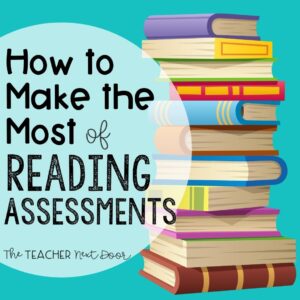
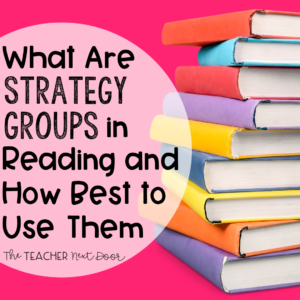


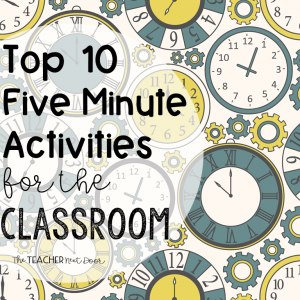






![DAY THREE DROPS! ⬇️⬇️⬇️
👉 Today, you can…
✔️ Grab done-for-you resources to keep your students engaged for $3
✔️ Grab FREE instant download activities!
✔️ Grab all of this week’s deals if you missed any!
ALL 5 of these comprehensive resources from my shop are $3 today to help fight spring fever in your classroom! 🌸🌼🌷
✏️ [BRAND NEW] Step-By-Step Personal Narrative Unit
✏️ Paired Texts Fiction to Nonfiction for Spring
✏️ 4th Grade Morphology & Vocabulary Unit
✏️ Main Idea Unit for 4th & 5th Grades
✏️ Figurative Language Complete Unit for Busy Teachers
Want the link to all the deals and freebies? Comment APRIL PARTY and we’ll send it directly to your DMs! 📫💌
PS - Don’t forget that you can still access all the Day 1 and Day 2 Deals too! 🩷](https://the-teacher-next-door.com/wp-content/plugins/instagram-feed/img/placeholder.png)

